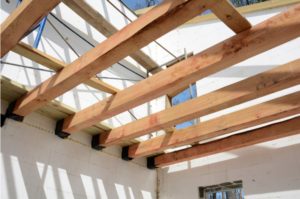How to Maintain Timber During Winter Season
It is essential to maintain your wood during winter as humidity level rise and timber get spoilt easily if not well cared for. If you want to protect your deck, keep reading this article to find out how you can care and maintain your timber.
Tips to Maintain Timber During Winter
 During winter, it is challenging to maintain your home’s interior, including the deck. These tips will help you safeguard your deck from damages.
During winter, it is challenging to maintain your home’s interior, including the deck. These tips will help you safeguard your deck from damages.
- Inspect and rectify
It is a good idea to repair all the damages on the wood before the winter season to prevent it from trapping dirt and moisture on the deck. If not rectified, it will fasten the process of wood rot.
- Clean frequently
Clear all the clutter on your deck. It is because it traps cold air which causes moisture leaching on your wood. This will eventually cause wood discolourations after the winter is over.
Other ways that could help maintain your wood include:
- Remove mould and mildew build-up
- Remove snow
- Apply water replant seal
Benefits of Choosing Theo’s Timber Ltd
Theo’s Timber Ltd offers a wide range of timber supplies. There are some benefits that come with choosing their products. They have excellent quality products with accurate finishing. They provide you with timber cut down to the size you prefer, and the wood is also treated to enhance sustainability.
Maintaining timber is crucial during winter as it helps your deck last long before you replace it. It is essential to understand that humidity is what causes rots. Therefore, you should maintain proper humidity levels.
It is also wise to look for durable timber supplies for building your construction project as it will save you the struggle when winter comes.
Timber Maintenance FAQs
How do I treat my deck for winter?
It is essential always to clean your deck. This will help get rid of dirt, old mulch or oil, and anything else that can cause a stain or leave streaks. Make sure to scrub down all the snow and repair any damages in the wood.
Also, you should make sure the joists are covered in felt paper and securely fastened with screws. You may have to renew this every year because it can become brittle in cold temperatures, so store some spare pieces for next year’s winter. Finally, cover the floor boards (if they’ve not been replaced) if there is no better way to seal them from water damage.
Can you oil deck in winter?
Use high-quality oil protection is recommended as it helps your deck maintain its look and longevity. We suggest waiting until the spring. It’s not about “oiling” the deck, but rather it’s about applying a new layer of protective oil to seal old oils and prevent future cracks from getting worse. Timber has natural oils which need time to dry and leach out so as not to produce a cloudy finish. The best time of year is late summer before winter sets in when an entire season can be allowed for proper drying. When it comes to timber decks, using the highest-quality finishing products are the best choice because they offer excellent resistance against fungus growth.
How do you winterise wood?
First, you need to inspect your deck for any damages, sweep off all the debris and wash the deck. Then make sure it is completely dry before you seal it. Wet wood captures and holds water, allowing mold to grow more easily. Dampwood can end up harboring spores which will eventually bore into the surface of your project creating unsightly rot. Having properly dried wood provides extra insurance against mould growth within the pores as well as slow degradation from moisture in general.
Can you paint decking in winter?
If you apply paint during winter, it tends to crack hence allowing moisture in and eventually it will damage the wood underneath. It is generally better to paint your decking in the warmer months. During the winter, the paint will dry to a solid exterior faster than it would during spring or summer because of lower heat loss during colder periods. When a surface dries at a slower rate, thicker layers of paint are pulled away from one another and may cause cracking over time.
